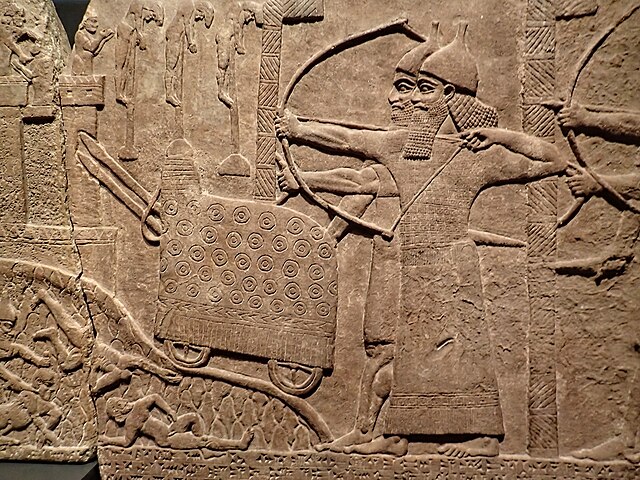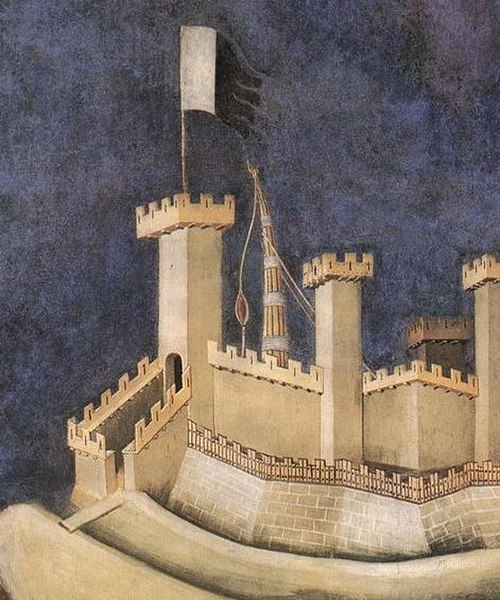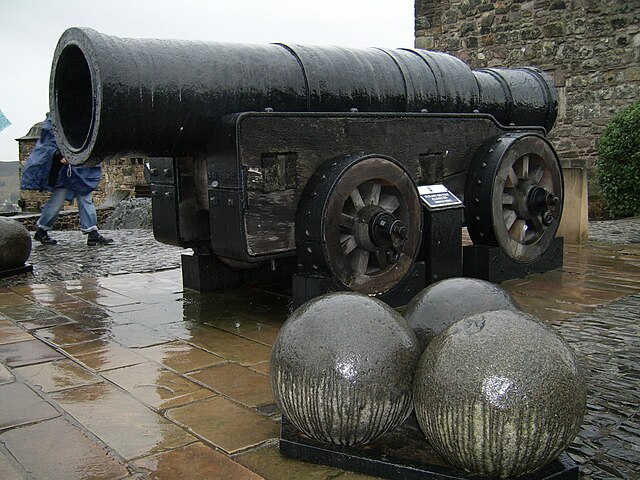A battering ram is a siege engine that originated in ancient times and was designed to break open the masonry walls of fortifications or splinter their wooden gates. In its simplest form, a battering ram is just a large, heavy log carried by several people and propelled with force against an obstacle; the ram would be sufficient to damage the target if the log were massive enough and/or it were moved quickly enough. Later rams encased the log in an arrow-proof, fire-resistant canopy mounted on wheels. Inside the canopy, the log was swung from suspensory chains or ropes.
Medieval battering ram in Italy
Replica battering ram at Baba Vida, Vidin, Bulgaria
An Assyrian battering ram attacking an enemy city, c. 865–860 BC
Replica battering ram at Château des Baux, France
A siege engine is a device that is designed to break or circumvent heavy castle doors, thick city walls and other fortifications in siege warfare. Some are immobile, constructed in place to attack enemy fortifications from a distance, while others have wheels to enable advancing up to the enemy fortification. There are many distinct types, such as siege towers that allow foot soldiers to scale walls and attack the defenders, battering rams that damage walls or gates, and large ranged weapons that attack from a distance by launching projectiles. Some complex siege engines were combinations of these types.
Replica battering ram at Château des Baux, France
Siege engine in Assyrian relief of attack on an enemy town during the reign of Tiglath-Pileser III 743-720 BC from his palace at Kalhu (Nimrud)
A stone-throwing machine set to defend a gate, in the fresco of Guidoriccio da Fogliano by Simone Martini (14th century).
The medieval Mons Meg with its 20" (50 cm) cannonballs







